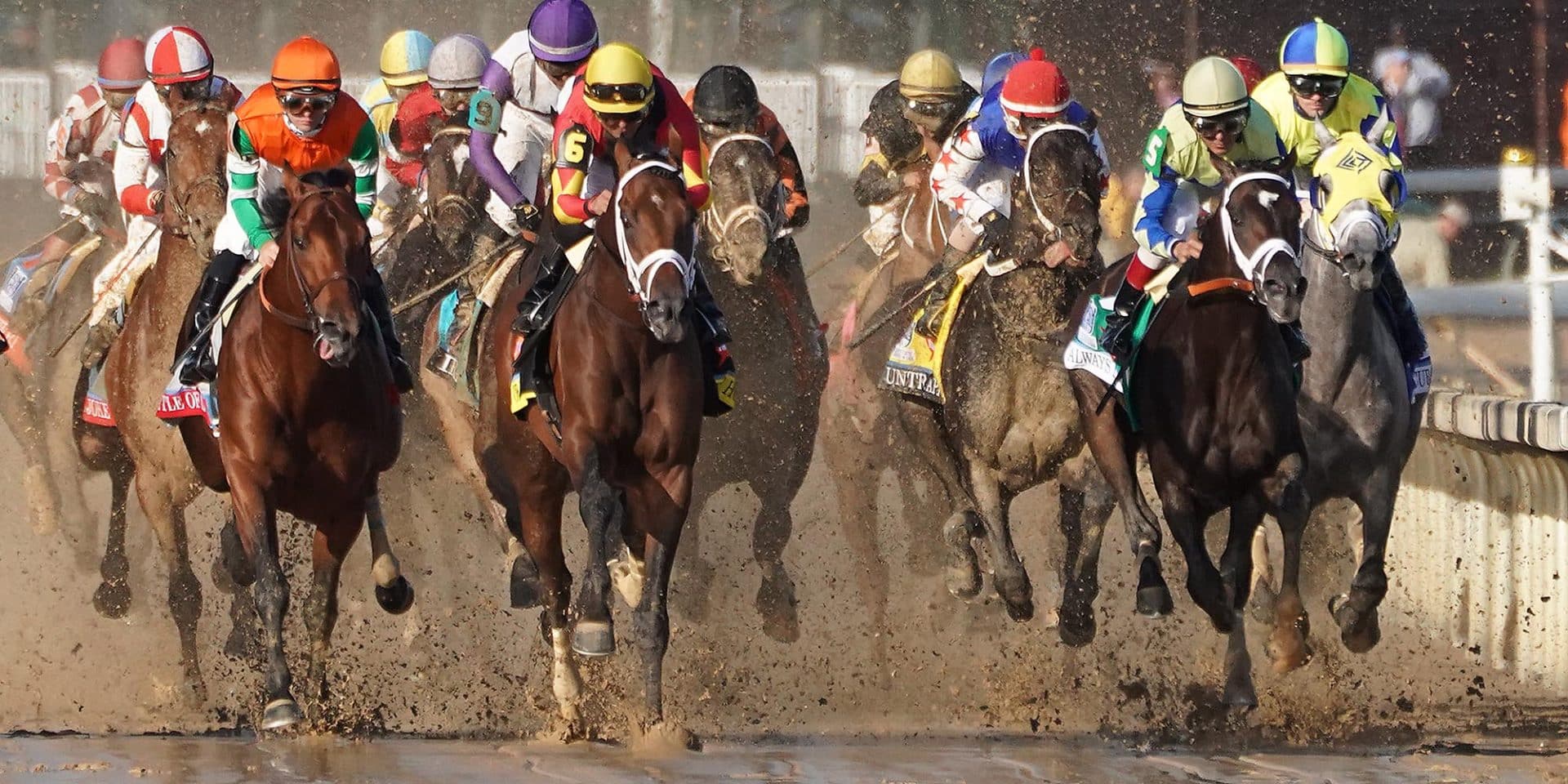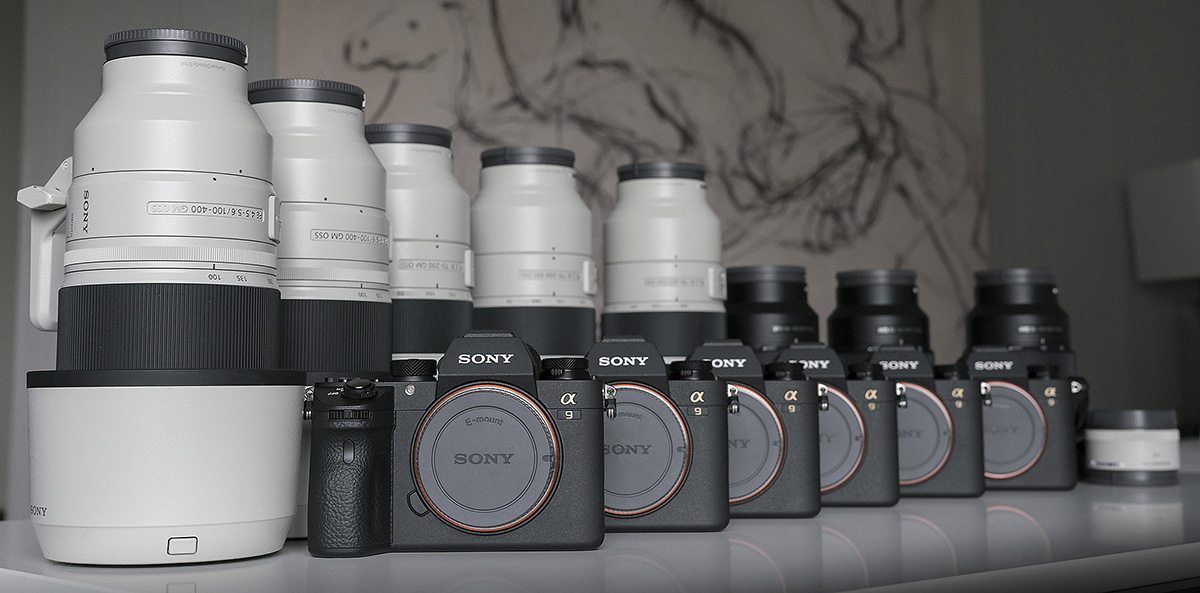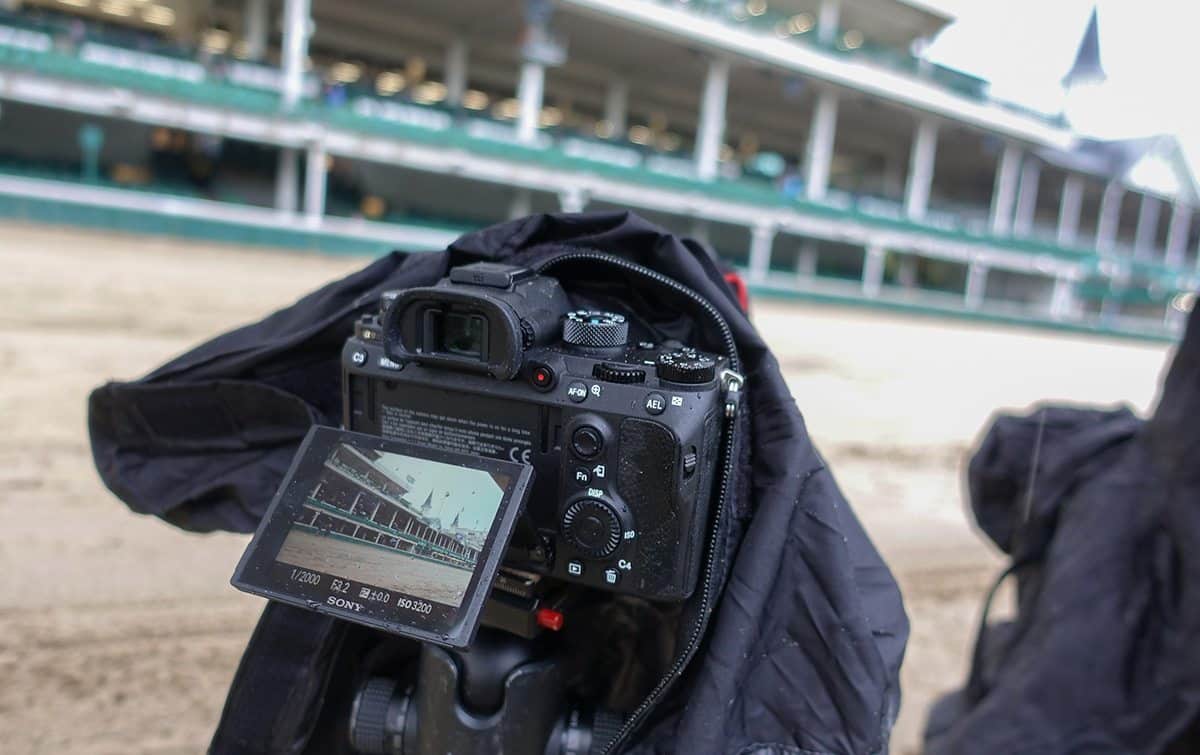
Kentucky Derby
Off to the Races
One of the events I have always wanted to cover in my 40-year career as a photographer was the Kentucky Derby. While I have covered other horse races in North America and Europe, the Kentucky Derby is the horse races of horses races. And this year I got my chance not only to cover the Derby but also use my brand-new Sony a9 cameras.

My gear line up for the Kentucky Derby
I complimented my a9 cameras with a loan of additional cameras and lenses from the new Sony Pro support team. In total, I used six Sony a9 cameras, two 100-400mm G Masters, three 70-200mm G Masters, three 24-70mm G Masters and a 2x E Mount Teleconverter to cover the event with other wireless and wired remote systems.
As I flew to Cincinnati, I was anticipated capturing beautiful racing images in great weather, but on my drive from Cincinnati to Louisville, those hopes were washed away as I drove through the downpours to the hotel.
When I got to Churchill Downs the next morning it was still raining, and the track looked like a swimming pool, this was going to be a test of the new Sony a9.
My plan was to use four a9s on remote, and two handheld cameras during the race. On the day before the Derby, I walked around in the rain and made a plan for where I would put down my remotes. On the inside rail of the finish line at the Derby, it is an impressive line of DSLR cameras on remote, and I eventually put down three a9’s with 24-70 f/2.8 G Masters on them and one a9 with a 70-200mm f/2.8 G Master on it.
After two days of working in the mud and rain with a new camera in hand, I came away extremely impressed with the a9’s performance and learned a lot about working with the a9 and this new generation of mirrorless cameras.

Using the LCD to set focus on a remote a9
FPS: Frames per Second capturing images at 20 fps (Frames Per Second) and shooting the horse races it emphasized just how remarkable that speed is. It reminded me of that famous image sequence where Edward Muybridge proved that a horse had four hooves off the ground at the same time.
While I wouldn’t recommend shooting every sport at 20fps because of a significant amount of data the camera will record and time it will take to look through all the images captured, in sports like horse racing I can pick just the right frame with the winning horse with all hooves off the ground. With an 8fps faster camera the most DLSR’s I get extra frames to choose from which to choose the exact right moment at the peak of action. (See a video clip put together from still images here https://vimeo.com/216570035)
Auto Focus: The a9 makes an impressive Autofocus calculation at 60 times a second which means that its sensing and tracking AF 3 times faster than the shutter can make exposures. My hit rate (in focus shots) was spot on with a few exceptions which I have to account for user error and demonstrated the needed to dig deeper into the AF settings in the menus.
Tilt Screen and EVF: I found one of the real benefits to using the a9 on remote is the tilt screen which allows me to set AF or Manual focusing while sitting or kneeling comfortably. Not having to lay down flat to try and peer through a viewfinder in the puddles around the track is a real problem and I joked with my fellow photographers they should have brought a mask and snorkel to set up their remotes. Also in Manual or Direct Manual Focus having the view screen (or Electronic View Finder – EVF) magnify the image made manually focusing on a subject a breeze. An interesting side note is that I know use the EVF to do everything expect set-up remotes as the EVF has about three times the resolving power of the back LCD on the a9 and doesn’t need to be shaded in bright sunlight when reviewing/magnifying images or setting menu items.
Weather Proof-ness: Wet weather is always a concern when walking around in wet rainy conditions with electronic gear and cameras are no exception. During the a9 launch, Sony said they had paid particular attention to weatherproofing their new flagship camera. At the Kentucky Derby, it rained pretty much both of the two days I covered the racing at Churchill Downs, and my semi covered remotes and my uncovered hand-held cameras handled it with no issues. I can attest that all the controls of the camera are well weather sealed from my “live testing, ” and if I have a concern at all, in future events, it would be to pay attention to the rear LCD when it’s tilted out. I did this on all my remote cameras and had no issue at the Derby.

Sony a9 on remote ready for action.
Battery Life: Battery life is something else that has plagued Sony Alpha users, and the a9’s new and improved battery system is impressive. While at the Derby I found I could shoot all day on one single NP-FZ100 battery (cameras on remote in “ready to fire mode” lasted about 7 hours on a single battery) and didn’t have the accessory Sony VG-C3EM Vertical Grip. Working without a battery grip made for an even smaller lighter camera to work with when setting up multiple remotes which are a real benefit when having to carry four remote cameras to place on the course.
I loved the luxury being able to take all my gear into the Derby press room, six cameras, and eight lenses, which comfortably fit in one rolling case with the extra batteries, the chargers, and everything else I needed. The size and weight savings are all in the a9 camera body, but it is overall the packed size of gear that is paramount to me in this age of modern airline travel. The Sony a9 has earned its way into my camera line up and will be my new sidekick on sports and news assignment in the future.
-30-
